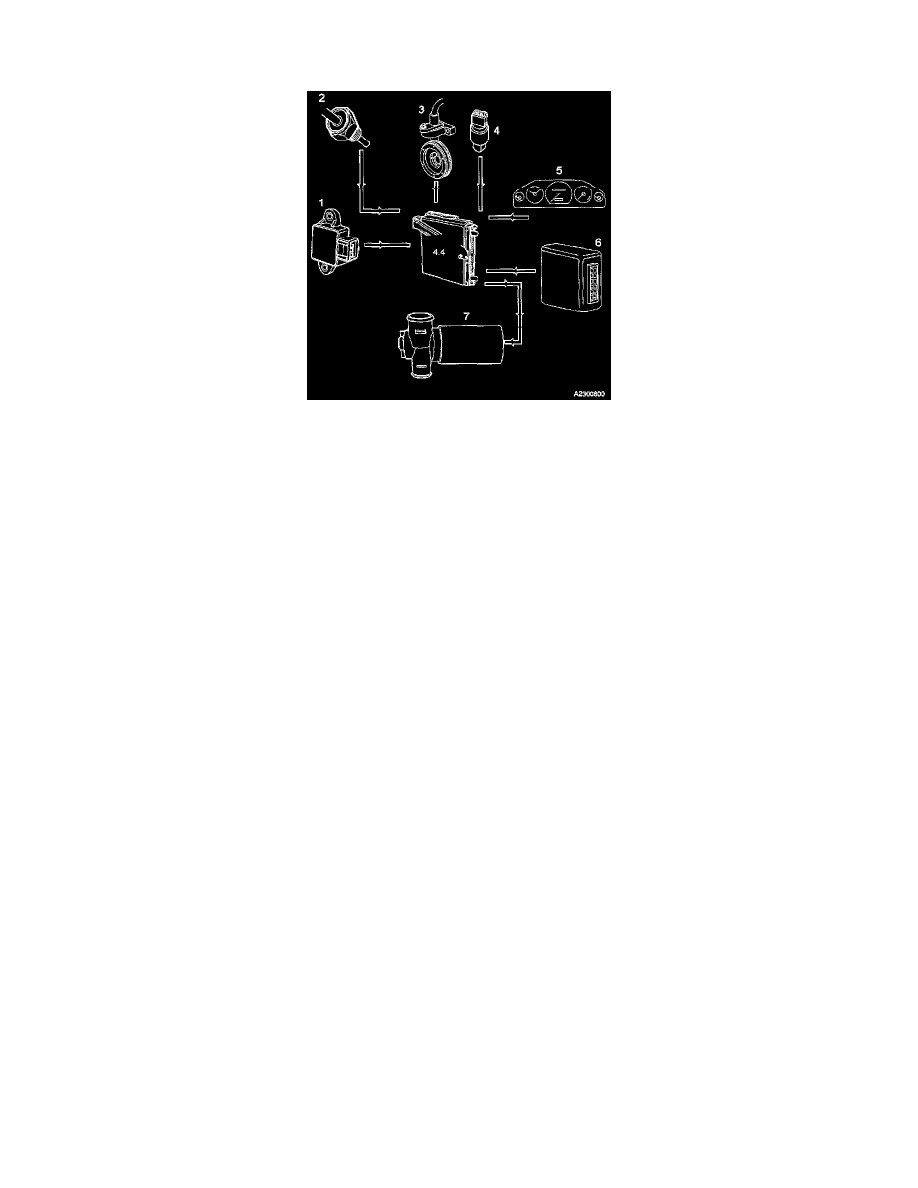V90 L6-2.9L VIN 96 B6304S (1998)

Idle Speed/Throttle Actuator - Electronic: Description and Operation
Control Of Idle Air Control Valve
Overview
There are two reasons that the engine control module controls the idle air control (IAC) valve. Firstly to maintain a constant idling speed regardless of
load and, secondly, to supply air to the engine during engine- braking.
The engine control module computes the output signals to the idle air control valve using information from:
^
Throttle position sensor (1)
^
Engine coolant temperature sensor (2)
^
Engine speed sensor (3)
^
Pressure switch (Pressostat) (4)
^
Combined instrument panel, speed signal (6).
Information from the transmission control module (5) regarding gear selector position is also used.
Idle Air Trim
The throttle position sensor supplies the engine control module with a signal describing the throttle angle. As the throttle position sensor has no fixed
idling position the engine control module has an adaptive function which stores the lowest value it has received and adopts this as closed throttle posit
on (CTP) (idling). Wide open throttle (WOT) is calculated as a fixed angle from closed throttle position.
When the throttle position sensor signals that the throttle is closed and that the engine is idling, the engine control module controls the idle air control
valve so that the engine has the correct idling speed no matter what the engine coolant temperature and load. To enable the engine control module to
adjust idling speed quickly when engine load varies, it is supplied with information about the operation of the air conditioning (A/C) compressor. It
also receives information from the automatic transmission control module when drive is selected. When this happens air flow through the idle air
control valve is increased momentarily to raise idling speed. The same applies when the engine control module activates the engine cooling fan.
Control of idling speed by the engine control module offers the following advantages:
^
Idling speed does not require adjustment (due to aging or fouling of components).
^
Low idling speed and low fuel consumption is achieved by continuous compensation for changes in load.
The engine control module idling control function is adaptive (idle air trim adaptation). The engine control module learns how much the idle air
control valve should open to give the correct idling speed. This information is stored and used when the engine is started again.
In the event of an idle air control valve control fault, the valve will assume a higher or lower idling speed than normal, depending on the cause of the
fault.
Engine-braking
During engine-braking and at closed throttle position, the engine control module controls the idle air control valve so that air is supplied to the engine
to:
^
Maintain the negative pressure in the inlet manifold within its permitted range.
^
Improve combustion and reduce exhaust gas emissions.
^
Control engine-braking and how fast engine speed can drop.
